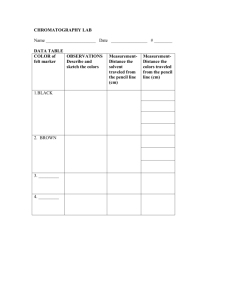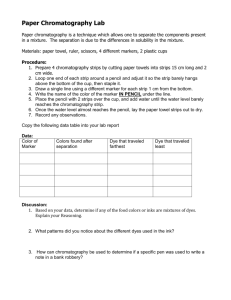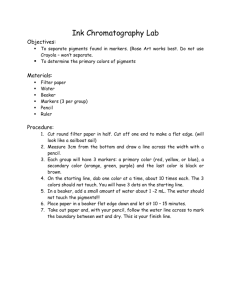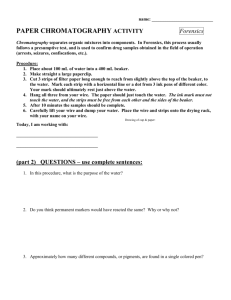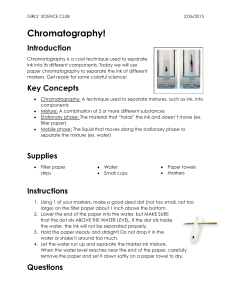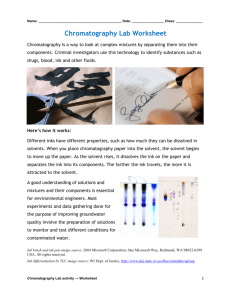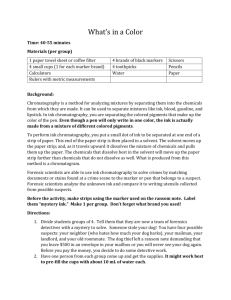The Case of the Kidnapped Snowman A CSI Chromatography Lab
advertisement
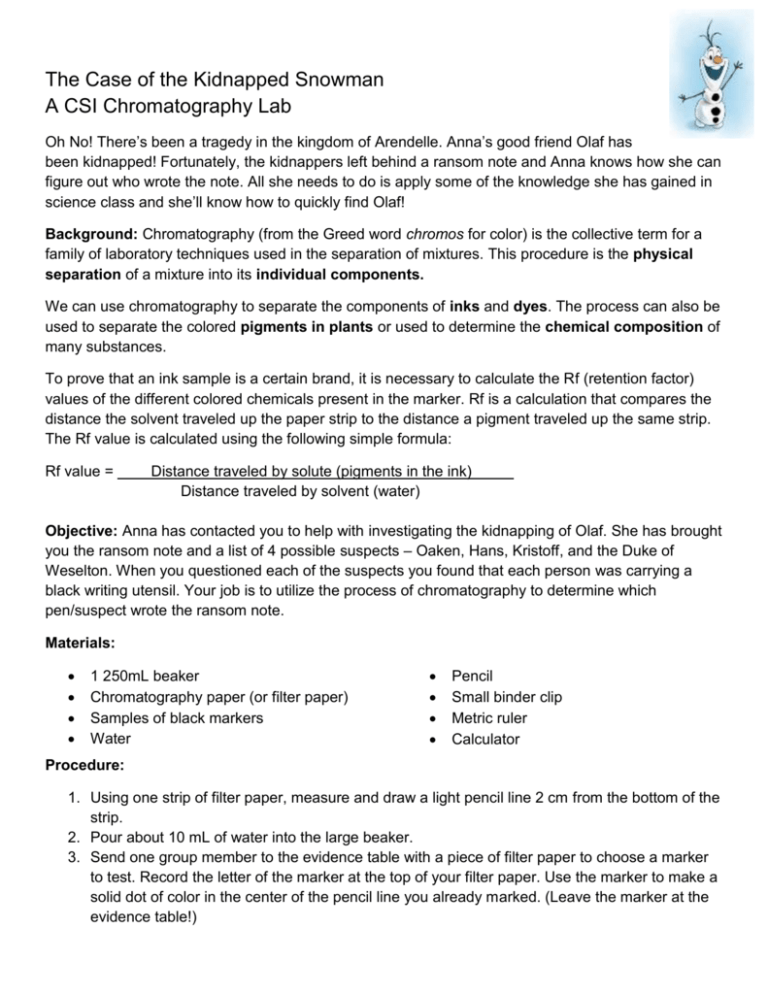
The Case of the Kidnapped Snowman A CSI Chromatography Lab Oh No! There’s been a tragedy in the kingdom of Arendelle. Anna’s good friend Olaf has been kidnapped! Fortunately, the kidnappers left behind a ransom note and Anna knows how she can figure out who wrote the note. All she needs to do is apply some of the knowledge she has gained in science class and she’ll know how to quickly find Olaf! Background: Chromatography (from the Greed word chromos for color) is the collective term for a family of laboratory techniques used in the separation of mixtures. This procedure is the physical separation of a mixture into its individual components. We can use chromatography to separate the components of inks and dyes. The process can also be used to separate the colored pigments in plants or used to determine the chemical composition of many substances. To prove that an ink sample is a certain brand, it is necessary to calculate the Rf (retention factor) values of the different colored chemicals present in the marker. Rf is a calculation that compares the distance the solvent traveled up the paper strip to the distance a pigment traveled up the same strip. The Rf value is calculated using the following simple formula: Rf value = ____Distance traveled by solute (pigments in the ink)_____ Distance traveled by solvent (water) Objective: Anna has contacted you to help with investigating the kidnapping of Olaf. She has brought you the ransom note and a list of 4 possible suspects – Oaken, Hans, Kristoff, and the Duke of Weselton. When you questioned each of the suspects you found that each person was carrying a black writing utensil. Your job is to utilize the process of chromatography to determine which pen/suspect wrote the ransom note. Materials: 1 250mL beaker Chromatography paper (or filter paper) Samples of black markers Water Pencil Small binder clip Metric ruler Calculator Procedure: 1. Using one strip of filter paper, measure and draw a light pencil line 2 cm from the bottom of the strip. 2. Pour about 10 mL of water into the large beaker. 3. Send one group member to the evidence table with a piece of filter paper to choose a marker to test. Record the letter of the marker at the top of your filter paper. Use the marker to make a solid dot of color in the center of the pencil line you already marked. (Leave the marker at the evidence table!) 4. Carefully lower the filter paper into the water BUT make sure the color dot stays above the water level. If the dot falls below the water level, you will have to start over. 5. Once the paper is at the right level, use the binder clip to attach the end of the paper to the pencil so the pencil rests on the edge of the beaker. 6. As soon as you put the paper in the water, begin timing for 5 minutes. 7. After 5 minutes, remove the paper from the water and let dry for a few minutes. 8. Repeat this procedure for 3 more markers. 9. After you have tested the 4 markers, check with your teacher to get an ink sample from the ransom note and repeat the procedure with the sample. 10. Measure the distance the ink traveled (measure from the pencil line to where the ink stopped) and the distance the water traveled (measure from the bottom of the paper to where the paper is no longer wet). Record this information in the data section. Then, divide the distance the ink traveled by the distance the water traveled to get the Rf value and record that information. Data: In your science notebook, copy the following table for each of the markers that you test. Tape your chromatograph in your notebook next to the table that matches it. Pen/Marker: Color #1 Color #2 Color #3 Color #4 Brand: Name: Name: Name: Name: # of Colors: Solvent Distance (mm): Distance (mm): Rf Value: Distance (mm): Rf Value: Distance (mm): Rf Value: Distance (mm): Rf Value: Discussion and Conclusion (answer in complete sentences): 1. What component of this experiment is the solute? Which one is the solvent? 2. Is chromatography a physical or chemical means of separation? Why? 3. Why do you think it was important to make sure the dot of ink did not fall below the water level in the beaker? 4. Were there any markers that did not separate in the water? If so, which ones? Why do you think they “refused” to separate? 5. Do you think linking a brand of pen or marker to the crime is enough evidence to convict a suspect? Why or why not? Extension: If your group finishes early, try using rubbing alcohol to test the markers that did not separate. Follow the same procedure as above and create a similar table for the results. Did the ink separate using the rubbing alcohol? If so, why do you think it worked in alcohol, but not water? Which of the solvents – water or rubbing alcohol – worked best? Why?
